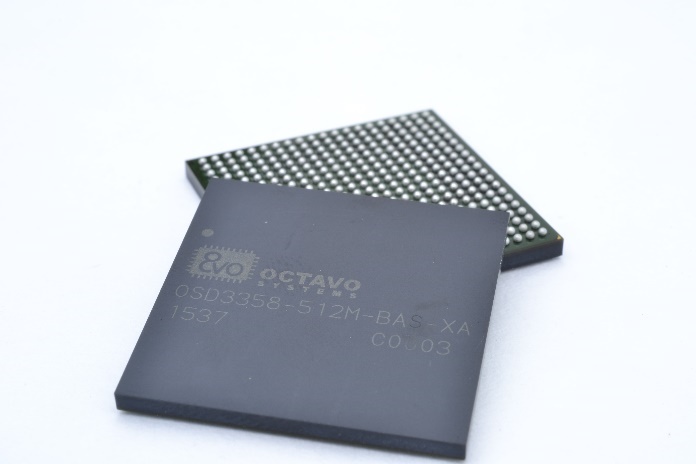SSZTBA8 may 2016 AM3358 , TL5209
I would like to talk to you about Octavo Systems and the work we are doing there. We have developed a product that allows innovators to easily take advantage of the powerful Sitara™ AM335x ARM® Cortex-A8® processor. We recently launched the OSD3358 which combines the AM3358 processor with the TPS65217C PMIC, TL5209 LDO, up to 1GB of DDR3, and over 140 resistors, capacitors, and inductors into a single easy to use package. The OSD3358 utilizes a technology known as System-in-Package (SiP) or Multi-Chip Module (MCM) to integrate all of these components into a single BGA package that is compatible with standard low cost manufacturing processes. While SiP technology has been around for at least a decade, innovative companies looking for this level of integration haven’t found many solutions. Octavo Systems has removed the barriers to SiP/MCM technology and has created a device that allows all designers to create smaller more robust designs quicker than ever.
Some key applications for OSD358 are:
- Industrial
- Smart sensors
- Remote imagers
- Cloud computing (perhaps “fog” computing)

So Why Did We Make the OSD3358?
With the OSD3358 we set out to help solve the main headaches facing system designers. We picked the AM3358 processor as the base for our first SiP because of its large number of peripherals and the strong community around it through the BeagleBone Black. When designing with the AM3358 processor, the most difficult task is electrically connecting the DDR3 to the processor. DDR3 is very sensitive to layout, each trace must be exactly matched to the others. In order to be successful the layout typically has to be done multiple times before getting it correct. Since the OSD3358 integrates the DDR3 we have already done the layout for you. You might never have to do another DDR layout again!
Another challenge designers’ face is power. Integrating the PMIC into the OSD3358 means you never have to think about power sequencing again or which power domains need to be hooked to what pin. That is all done. Simply connect up a 5V USB, 5V DC, or battery to the OSD3358 and let it go. Since the OSD3358 uses the powerful TPS65217C it can also provide power for many of your other circuitry as well.
The OSD3358 is also smaller than most implementations out there, saving board space!
Why Are We Focusing on SiP/MCM Technology?
Moore’s Law has driven the IC world, but if the desire is true system integration, no one process driven by Moore’s Law satisfies all of the classes of IC technology optimally. In order to combine multiple functions into one piece of silicon, one or more of the functions have to be compromised (See my other blog for more detail on this). This issue leads to the simple idea that the only way to achieve an optimally performing system is to use the best silicon for each function. If that is the case, then what is the path to integration?
This is where Octavo’s SiPs come in. Through our innovative design and manufacturing processes we can take the best silicon for each function and package them into a single easy to use device, creating the best performing tightest integrated system possible. With the wide availability of best in class silicon, TI was the natural choice to work with to bring this new form of integration to the market in the form of the OSD3358.